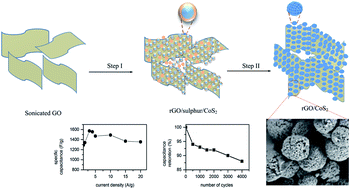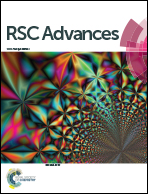Reduced graphene oxide/CoS2 porous nanoparticle hybrid electrode material for supercapacitor application
Abstract
Graphene/transition metal hybrid electrode materials are considered promising electrode materials for supercapacitor applications. However, the stacking of graphene sheets and agglomeration of transition metal parts are still challenging issues to overcome in order to achieve the expected theoretical performances. Herein, a reduced graphene oxide/cobalt disulphide porous nanoparticle hybrid electrode material is fabricated using sulphur as the template precursor. The unique porosity derived from the sulphur template gives favourable open structures for easy diffusion of electrolyte ions and better accessible active sites, and free space for volume changes and results in improved electrochemical performance. In this hybrid material the graphene layers serve as a conductive matrix and physical support for pours cobalt sulphide nanoparticles. On the other hand, the porous cobalt sulphide redox-active material uniformly decorated on rGO can enhance the pseudocapacitive performance of the as synthesized hybrid material. Using the combined advantage of graphene and transition metal sulphide the as synthesized composite electrode material has excellent specific capacitance, excellent rate capability and cycling stability. Thus, our design approach can be considered as a potential candidate to design advanced energy storage devices.



 Please wait while we load your content...
Please wait while we load your content...